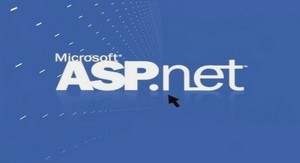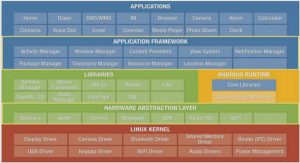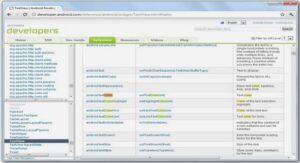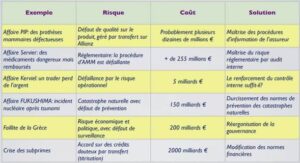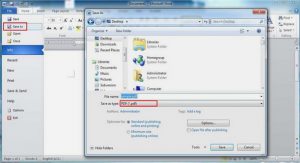Language, Class Names, and Namespaces
Remember that, for each type of file selected in the New File dialog, any code automatically included in the file is in the language that you specify in that dialog – the choice is between Visual Basic .NET and C#. Depending on the type of file you select, the dialog will also contain controls in which any other required information is entered – such as the class name and namespace (in some cases this is optional, while in others – such as a Web Service or Class file – it is mandatory). We’ll create some example pages later on in order to demonstrate these general techniques. Help, Support, and Reference Information We’ve seen how Web Matrix provides access to reference materials and online help in several ways. Future plans are for Web Matrix to include its own comprehensive help files that describe the workings of the IDE, and how to get the best from the product. Only minimal built-in help features are currently implemented at the moment, such as the links to various resources and samples at http://www.asp.net/ and http://www.gotdotnet.com/. However, if you place the cursor over a class name in the Edit window and press the F1 key, a new ClassBrowser window opens with reference details of that class. Several other places within the Web Matrix IDE also provide access to online help and support. The Community window (in the lower part of the « project » window) contains links to the ASP.NET Web Matrix site, as well as links to several Microsoft-run .NET newsgroups, and list servers provided by other members of the Web Matrix community. The ASP.NET Web Matrix site is part of the main ASP.NET site at http://www.asp.net/WebMatrix, which also contains a great deal of useful information and links to other ASP.NET-related sites. It is also the prime source for downloadable add-ins, control libraries and other resources for Web Matrix – including access to the latest version of the product. Two views of the first page follow so that you can see the range of resources that are provided:
Sending Feedback to Microsoft
The Help menu in the Web Matrix IDE contains an entry to send feedback on the product to Microsoft. This feedback can consist of bug reports, feature requests, or just general information and comments. Web Matrix is a « community product », and, as such, its future development will be guided to a large extent by the feedback Microsoft receives from users. So, don’t be afraid to send in your opinions – the development team is keen to hear what you think! The Send Feedback window is a three-page tabbed dialog that contains the Feedback page itself, the application Information page, and a list of all the currently Loaded Assemblies (the same dialog, but without the Feedback page, appears when you select the Application Information command from the Help menu): The Microsoft ASP.NET Web Matrix Web Server Before we move on to Part 2, where we’ll see Web Matrix in action, we’ll take a quick look at the web server that is provided with Web Matrix. This is a slim and lightweight web server that can be used to run ASP.NET pages and other resources (such as web Services) on machines that do not already have a local Web server installed. When you first run an ASP.NET page or Web Service from within the Web Matrix IDE, a dialog opens that asks you which web server you want to use. As shown in the following screenshot, you can allow the Microsoft ASP.NET Web Matrix Web Server to execute your page or Web Service: As you can see, the default for the web server is to run on port 8080. This is ideal if the machine you are using already has a web server (such as IIS) installed and running. The existing Web server is likely to be using port 80, and so by using a different port the Web Matrix Web server avoids any possibility of an error. You can change the Application Port to a different port if you wish (such as port 80 if you don’t have IIS installed). Alternatively, you can select an existing instance of Internet Information Server (IIS) to execute your page, in which case Web Matrix will create a new virtual root (with the name you specify) that points to the folder containing the file you are editing. If you wish, you can also turn on directory browsing for this virtual root, which makes it easier to find and run individual pages as you develop your application. Once the Web Matrix Web server has been started, an icon appears in the Windows Taskbar tray. Right-clicking this icon displays a menu in which you can open the web site that the web server is providing in your default browser, Restart or Stop the web server, or show details about it:
Putting Web Matrix to Work
Now that you know what tasks Microsoft ASP.NET Web Matrix is capable of, it’s time to put them into practice. Web Matrix is easy to use, so we’re not going to show you every aspect of it in action. Instead, we’ll build a simple web site for a pizza delivery company, concentrating on the most commonly used pages. This will show you just how little you need to do to get a site up and running with Web Matrix. Pretty Quick Pizza Our sample web site is designed to allow customers to pick pizzas and drinks, add them to a simple shopping basket, and then proceed to a checkout where they pay either by cash on delivery or by being billed to an account. It’s a really simple e-commerce site, and leaves out many features (such as looking cool!) because they aren’t required. We’ll end up with a simple site like this: From this page a customer can select from a variety of types and sizes of pizza and from a range of drinks. Their selection can be added to a shopping basket, and once the customer has made all their choices, they can proceed to the checkout: The checkout page redisplays the customer’s selection and allows the order to be placed. The customer can choose to pay when the pizza is delivered or to have the amount billed to an account. If the customer chooses to have the amount billed to an account they will be taken to a secure login page where they can access their account details. All of the code for this example is available from http://www.AlAndDave.com/books/webmatrix/. Building ASP.NET Pages Because we’re not building a fully functional site, we’ve cut out some of the stuff that you’d normally use. For example, we’ve only got a minimal data access layer, limited security, and few advanced features. This is because what’s important is showing you the types of pages Web Matrix can create, and what you need to do to customize them for your own requirements. As Web Matrix is file based, you’ll need to set up the IIS Virtual Directory yourself. I called it PPQ. In the following sections we’ll tackle: ❑ Creating a Data Layer that consists of an XML file, a VB.NET component, and some SQL stored procedures and tables ❑ Creating User Controls for the page header and the shopping basket ❑ Creating the pizza selection page, where we use a variety of ASP.NET controls, as well as the newly created User Controls ❑ Creating the checkout page, where we take the user’s details and how they’d like to pay ❑ Creating secure pages for customers with accounts ❑ Creating a variety of different pages, such as those that user a Master and Details grid, or those that require caching ❑ How to create Web Services ❑ How to use other controls, such as the Internet Explorer controls and custom controls The Data Layer The data layer for this application consists of two files: an XML file that contains the data and a class that loads the data and performs some database logging. When you first start Web Matrix you’ll be presented with the New File dialog (remember that Web Matrix is file based, and not project based like Visual Studio .NET). To keep the files for this web site together we’ll need to create a directory – we can do this either externally in Explorer, or from within Web Matrix using the Workspace, where we select New Directory from the context menu:
